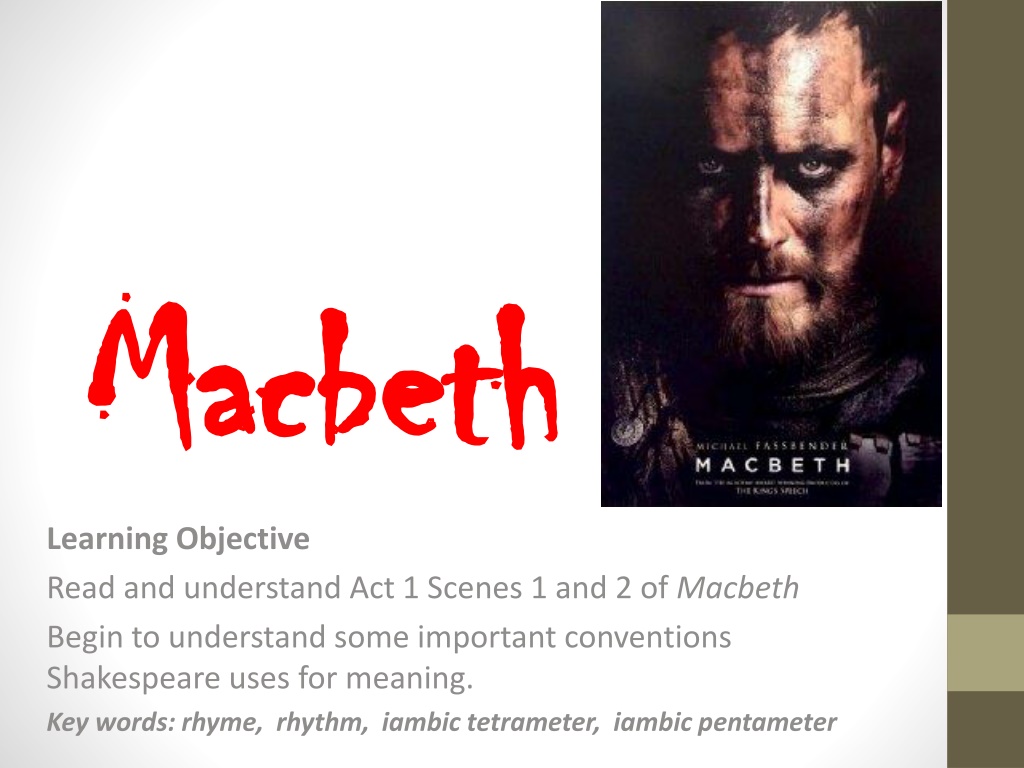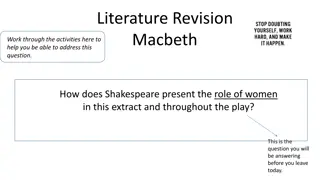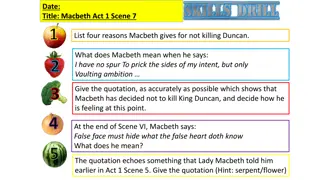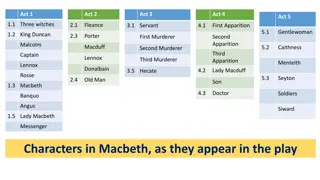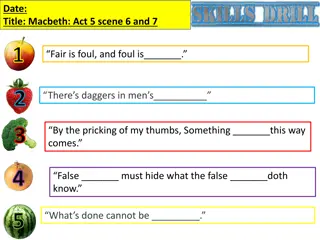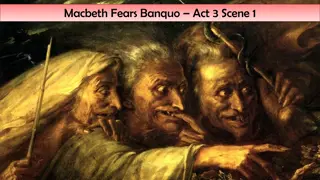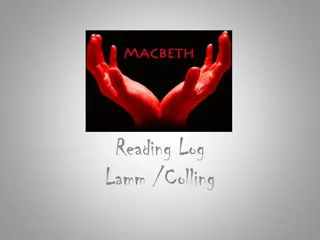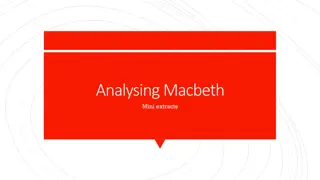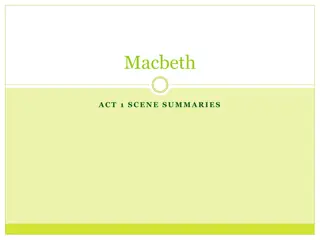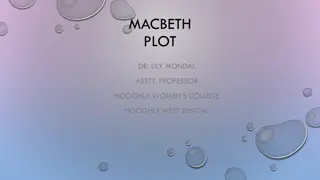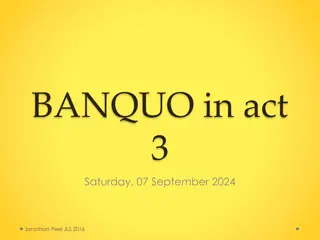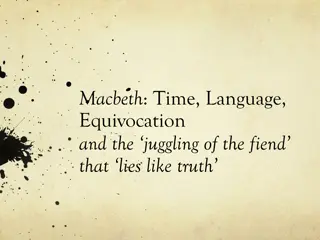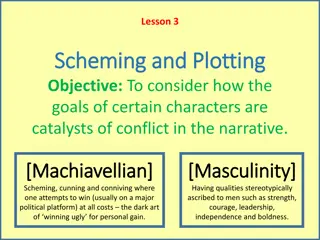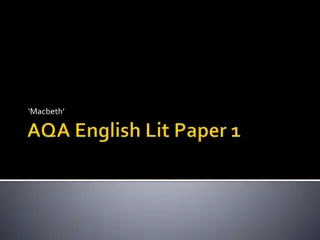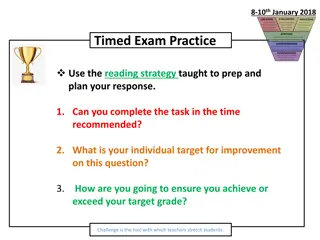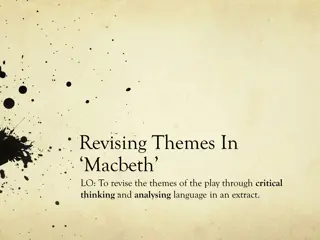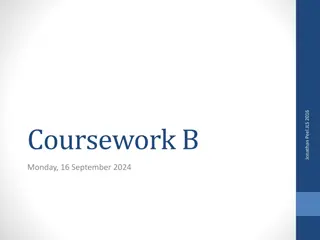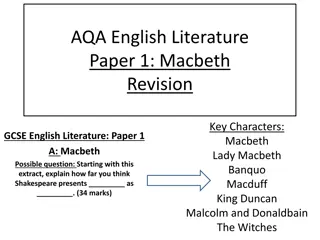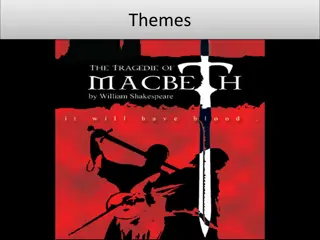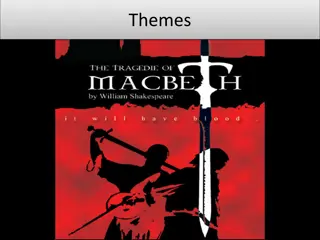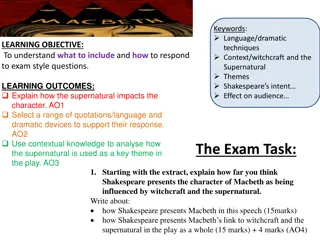Understanding Shakespeare's Conventions in Macbeth Act 1 Scenes 1 and 2
Explore the importance of rhyme, rhythm, iambic tetrameter, and iambic pentameter in Act 1 Scenes 1 and 2 of Macbeth. Dive into the conventions Shakespeare uses for conveying meaning, including the use of rhyme in verse, rhyming couplets, and the significance of rhythm in the witches' opening scene. Gain insights into the key characters and themes introduced in these initial scenes as you begin your journey into the world of Macbeth.
Uploaded on Sep 17, 2024 | 0 Views
Download Presentation

Please find below an Image/Link to download the presentation.
The content on the website is provided AS IS for your information and personal use only. It may not be sold, licensed, or shared on other websites without obtaining consent from the author. Download presentation by click this link. If you encounter any issues during the download, it is possible that the publisher has removed the file from their server.
E N D
Presentation Transcript
Macbeth Macbeth Learning Objective Read and understand Act 1 Scenes 1 and 2 of Macbeth Begin to understand some important conventions Shakespeare uses for meaning. Key words: rhyme, rhythm, iambic tetrameter, iambic pentameter
Starter 1 Use quiz questions from homework to quiz neighbour on the plot line of Macbeth.
Starter 2 What makes an effective opening to a story?
All Macbeth Witch one, Witch two, Witch three, Three apparitions, Hecate, Three other witches, Macbeth, Lady Macbeth, Banquo, Duncan, Malcolm, Donaldbain, Fleance, Macduff, Lady Macduff, Son of Macduff, Gentlewoman, Seyton, Porter, Captain, An old man, Doctor, First murderer, Second murderer, Third murderer, Ross, Lennox, Mentheith, Angus, Caithness, Siward, Yound Siward, English Doctor
Note on the texts You can make brief notes in the school copies of Macbeth IN PENCIL and you should do this as we read without being prompted. You may wish to buy your own copies where you can make unlimited notes. If you do this Cambridge version is brilliant.
Act 1 Scene 1 http://www.hollowaypages.com/images/mac3.gif
Macbeth Macbeth Learning Objective Read and understand Act 1 Scenes 1 and 2 of Macbeth Begin to understand some important conventions Shakespeare uses for meaning. Key words: rhyme, rhythm, iambic tetrameter, iambic pentameter
Rhythm in Act 1 Scene 1 Shakespeare s plays are written in verse. This verse will often have a few common characteristics: rhyme rhyme in verse involves matching sounds at the end of each line, it gives a pattern to language and makes it easier to learn. Task Find the rhyme in the witches opening scene. rhyming couplets Speeches, scenes and acts often end in a rhyming couplet. The Elizabethan stage had no lights or curtains to signal the end of a scene. So Shakespeare often provides his characters with a strong rhyming couplet to accompany their exit. Shakespeare often uses rhyme in songs or to represent the supernatural.
Extension -Rhythm in Act 1 Scene 1 Most of Shakespeare s plays were written in iambic pentameter: Shall I compare thee to a summer s day 10 syllables Iambic pentameter is like a heartbeat de dum de dum de dum de dum de dum Try this: Words to the heat of deeds too cold breath gives. Can you make your own iambic pentameter line? eg. I think I d like a plate of eggs and ham In Act 1 Shakespeare does not use iambic pentameter instead he employs a contrasting meter - trochaic tetrameter When shall we three meet again DUM da DUM da DUM da DUM This is unusual and seems out of place, it suggests a world that is upside down.
Key word glossary At the back of your books start a key word glossary and add the following terms, and their definitions, to it: verse rhyme rhyming couplet iambic pentameter trochaic tetrameter
Macbeth Macbeth Learning Objective Read and understand Act 1 Scenes 1 and 2 of Macbeth Begin to understand some important conventions Shakespeare uses for meaning. Key words: rhyme, rhythm, iambic tetrameter, iambic pentameter
Act 1 Scene 2 While we read pick out 1 5 words or lines that are used to describe Macbeth. Think - which words/lines did you find? Write them down. Pair Compare your lines with your neighbour. Together decide what they could mean. Share Be prepared to share these as a class.
Key quote glossary In the middle of your books start a key quote glossary and add some of the best quotes from the class discussions today.
Plenary Think back to the list we made at the beginning of the lesson and complete the following sentence: Macbeth is an effective play opening because
Macbeth Macbeth Learning Objective Read and understand Act 1 Scenes 1 and 2 of Macbeth Begin to understand some important conventions Shakespeare uses for meaning. Key words: rhyme, rhythm, iambic tetrameter, iambic pentameter
Homework Must: Draw or find a picture of Macbeth, annotate it with quotes from today s lesson Should: Add colour and detail to both quotes and picture (for memory retention) Could: Complete the same task for Duncan what does his language reveal about him
